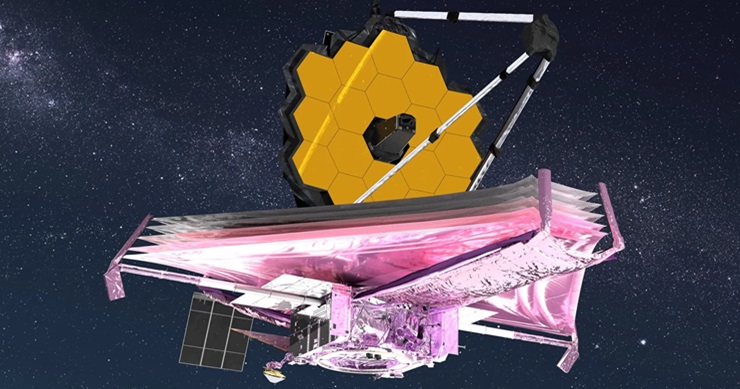The James Webb Space Telescope (JWST), located about 1 million miles away from Earth, has been capturing stunning images and generating new insights into stars, planets, and galaxies. Additionally, technologies developed for the telescope are benefiting everyday life, including advancements in LASIK technology for eye health and significant improvements to simulation software.
The software, Ansys Zemax OpticStudio, was modified with new features to simulate the JWST’s 18 hexagonal mirrors that form the telescope’s primary mirror. This mirror is the largest ever launched into space and deviates from the conventional space-mirror design. It was initially folded into a rocket and then deployed in space, unfurling like origami.
Preparing for such a project required enhancements in the software to test and tailor ways to deploy the mirrors in space. Simulating various scenarios helped fine-tune complex robotics involved in the deployment of the mirrors after the launch. The software was also improved to better communicate with Microsoft Windows programs, allowing for further customization.
Future telescopes, especially those that would launch in segments and need to be deployed remotely, are likely to incorporate elements of the JWST’s design. In 2018, NASA conducted a study to assess the feasibility of launching telescope components into space across multiple rockets and performing in-space assembly. The study found that telescopes built to fit the constraints of a single rocket’s launch capability become more expensive compared to a modular design. The modular design could achieve larger observatory sizes and reduce overall mission costs.
The complex robotics involved in such self-assembly efforts would necessitate improved software. The next major observatory will be even more reliant on modeling software, according to Joseph Howard of NASA’s Goddard Space Flight Center in Maryland. Beyond astronomy, the enhanced version of the software has potential applications in other fields.
Key Takeaways:
- The James Webb Space Telescope (JWST) has been capturing images and generating insights about celestial bodies that were previously impossible, from its position approximately 1 million miles away from Earth.
- The Ansys Zemax OpticStudio software, which was used to simulate the JWST’s 18 hexagonal mirrors, was updated with new features to improve communication with Microsoft Windows programs and to simulate various deployment scenarios in space.
- Future telescopes that will be launched in segments and assembled in space, similar to the JWST, are likely to incorporate elements of its innovative design, as studies have shown that this approach can be more cost-effective and allow for larger observatory sizes than conventional single-launch methods.
“The software, Ansys Zemax OpticStudio, had to be tweaked and even updated with new features to simulate the coordinate systems of the JWST’s 18 hexagonal mirrors, which together form the telescope’s primary mirror. That mirror is not only the largest ever launched into space, but also one that deviates from the conventional space-mirror blueprint. Prior to launch, it was folded into a rocket and then deployed in space, unfurling like origami.”
More details: here


Leave a Reply